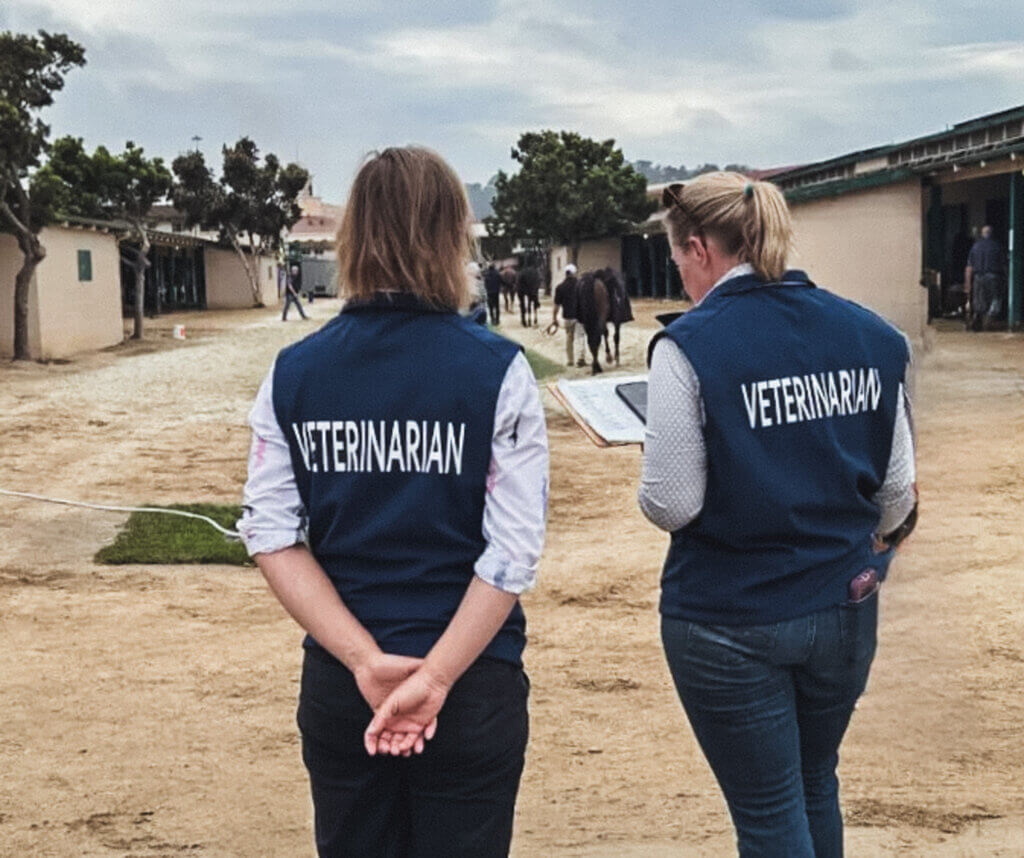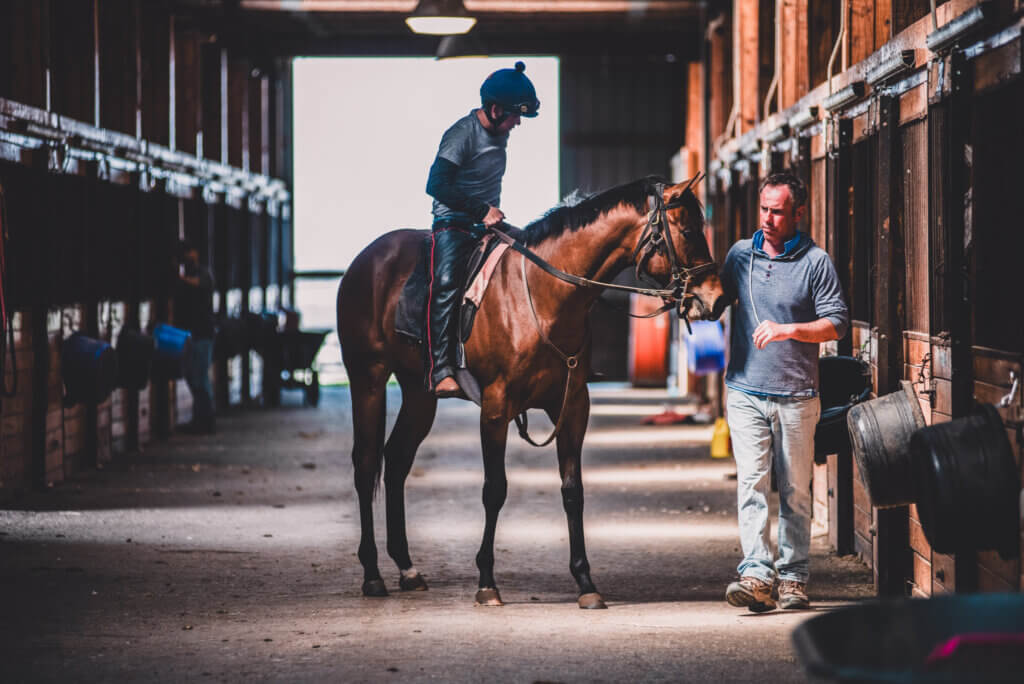By: Hayley Morrison
In recent years there have been a handful of older horses that have become fan favorites at Woodbine. Fans and horsemen will know their names — Cummings Road, Colleen’s Sailor, Dupes, Occasional View, Stormy Rush, Th Original Scotty, Stolonboy, Gentleman Jackson. It was only six years ago when 12-year-old Tevez ran his last three starts at Woodbine. Just over a decade ago, in 2012, Hall of Fame trainer Roger Attfield won the Grade 3 Singspiel Stakes with 10-year-old Musketier. A little farther back, graded stakes winner Parose raced until he was 12. He won the G3 Durham Cup handicap at age nine for trainer Sandy McPherson.
With that said, the Ontario oval has faced scrutiny about older horses, due in part to Wake At Noon’s untimely death 14 years ago. Crowned Canada’s Horse of the Year in 2002, Wake at Noon was briefly retired in 2004 at age 7 but returned to racing later that year. Three years later, he retired for a second time at age 10. In 2010, at age 13, he was brought out of retirement and put in training for a possible return to the races, but suffered a severe injury one morning at Woodbine and was euthanized.
As of next year, Woodbine plans to ban horses aged 10 and older from stabling and racing at the track.
Tim Lawson, vice president of Thoroughbred racing at Woodbine provided insight on why the rule is set to be implemented.
“The best interest of our equine athletes is always a top priority. It’s the number one priority in our sport,” said Lawson. “When you look at the horses that race at 10 or older, most of these horses are classy individuals that have given a great effort on the racetrack. Those horses deserve the opportunity to enjoy life after the racetrack. Between LongRun and the various aftercare programs, there are great services available to help with that transition.
“When we landed on this policy, we had a discussion with HBPA about our reasonings and how this will work going forward. These conversations will continue. We’re leaving lots of time before implementing to be fair to those trainers that have older horses. We understand they need time to make plans.”
As it stands, track ponies will be the only exception to this proposed house rule. The Alcohol and Gaming Commission of Ontario (AGCO) has yet to approve the new rule. The Jockey Club’s Equine Injury Database doesn’t provide public-facing statistics broken down by age outside of 2- and 3-year-olds, classifying all others as simply four and older. That means that we don’t know statistically at what age (if any) a horse’s risk of fatal injury or sudden death increases.
Horsemen have mixed feelings about the measure.
At age 11, Lapochka is still winning races at Woodbine. The son of English Channel has raced 78 times over the last eight years, racing for different owners and trainers as his career progressed.
Vito Armata has trained Lapochka for the last three years for Eight Star Racing Stables Inc.
“I’m not happy with the decision, if it’s a 10-year-old, okay, let the vet check the horse and if the horse is alright, you should let him run for one more year and after that, that’s it,” said Armata.
Lapochka has run three times since this year’s meet began at Woodbine. On May 11, he won a claiming race. In each start this year, Lapochka has been entered for a claiming tag (between $15,000 – $23,500) – but with no bites.
During his career, Lapochka has been ridden by 21 different jockeys, including Emma-Jayne Wilson. Wilson rode Lapochka in his first career start on June 17, 2016, and in his most recent start this week. If you follow Wilson on social media, you’ll notice she has posted several videos about riding the war horse.
“The first race they are out there, and they are ready, they are professional athletes that are tuned and primed, but they don’t actually know why,” she said. “They know all the preparation and all the education, but they don’t actually know what a horse race is. So, there’s that moment of understanding of when the doors fly (open), and we are asking them to give us everything they can until the wire. And they’re like, ‘oh, I understand what this is about,’ – but there is a lot of learning to go along with that.
“Whereas an older horse in particular like Lapochka they know the game probably better than we do in some ways,” Wilson continued. “He races with an air of confidence and like a swagger. You don’t need to tell him too much what to do, he knows what he is doing. So, it’s more about a team effort of awareness. You know, maybe I see a jockey doing something and I can anticipate, and you give a little cue to him, and okay, we’ll go this way. Or we’ll kick now because that horse looks like he’s got a little bit more run. It’s more of a conversation as opposed to telling the 2-year-olds what they are supposed to do and how and where. He works with you.”
Lapochka is not the only double-digit aged runner at Woodbine. A few minutes down the road from Armata’s barn you’ll find 10-year-old mare Northern Ruby grazing in hand and enjoying the morning sunshine outside the barn of trainer Ron Sadler, who runs a smaller outfit at Woodbine.
“I completely understand where they are coming from public opinion is extremely important right now and something happens to an older horse and fingers get pointed, and right or wrong, the rule is in,” said Sadler. “And I think on occasion, there are a small percentage of horses that can last to 10, 11,12 and do very well.
Sadler’s barn also includes 9-year-old Mambointheforest. Sadler has conditioned horses since 1986, both at Fort Erie and Woodbine, training stakes winners such as Arden Belle. Northern Ruby is a special horse in Sadler’s barn. The daughter of Giant Gizmo out of Affair At Midnight was bred by Sadler. Interestingly, the chestnut mare did not race until she was five.
“Basically, because I owned her, she always got shuffled back, with owners’ horses taking priority,” he said. “She did have a problem with a high suspensory, I lost a year with her. She came back at five and was stellar and she’s been great ever since.”
To date, Northern Ruby has made 29 career starts and won eight races. For her age, she is lightly raced compared to the likes of Lapochka.
Northern Ruby has made three starts at Woodbine this year, earning just over $21,000 for Sadler. She won a claiming race on June 6, and on June 27, she posted a runner-up finish in an optional claimer.
While Sadler understands the rule, he provided some food for thought on the topic.
“Possibly, they could have a different approach, in that some of these older horses are fan favorites, they’ve got a following, everybody (is like), ‘oh, Northern Ruby, Northern Ruby, I remember Northern Ruby and Coleyville’ – all these horses that have campaigned and done well over the years,” he said. “Possibly they should have stringent guidelines rather than ruling them completely off. Have a vet check and any question whatsoever, then retire them – but I do understand why the rule is in place.”
Walking along the shed with Sadler, it’s easy to spot trainer Edwin Knight with the handsome grey gelding Coleyville. The 10-year-old runner has raced 65 times over the last seven years. On May 31, Coleyville won a claiming race for Knight.
“I’d liked to keep racing him, and I don’t really know about how other trainers feel about it, but I’d like 10-year-olds to be able to run as long as they are sound, then nothing is going to happen.”
Back in May, trainer Martin Drexler lost one of his older runners, 10-year-old Malibu Secret who collapsed and died after a race.
“He was so good going into that race, happy, great, trained, breezed every week, literally as good as a horse can be. I think it’s just an unfortunate incident that can happen to a 3-year-old,” said Drexler.
Drexler has not seen the necropsy report yet, and therefore cannot confirm cause of death. On May 19, just two weeks after Malibu Secret passed, Woodbine notified horsemen they would ban 10-year-olds and older from stabling and running at their track.
“Honestly, I don’t actually have a problem not running 10-year-olds, whatever the rule is, I’m good with it,” he said. “I was never looking to run 10-year-olds. It’s just if you have a horse that is doing well it would be a shame to put one away. Now saying that, I don’t know if there is any reason behind it or if it’s just for the optics. If it was up to me, you know injuries happen at any age, and I think that some of the horses that are 8, 9, 10-year-olds that are racing consistently and making starts are probably the safest horses to race in a way.”
While Drexler understands the rule, he wonders about the cause and effect.
“My question is then if it happens to a 9-year-old next year, do they stop racing 9-year-olds?” he asked. “There are jurisdictions that run 11 and 12-year-olds and that make starts, and they fill races, and the horses are doing just fine.”
With Woodbine’s new rule to take effect next year (pending AGCO approval), it remains unclear whether Fort Erie Race Track will also ban older horses from running in future meets. Currently, there are a couple of 10-year-olds running at FE’s meet, Brady O’Brady and New York Mint.
“We feel that as long as the older horses are sound, healthy and are in good form they can continue to race past nine,” said Andrew Cady, Fort Erie’s chief operating officer and property manager, when asked about Woodbine’s restriction.
Depending on a track’s location, age-out requirements may be set by the racetrack or by the regulatory body overseeing that track.
At Assiniboia Downs, there is one 11-year-old and two 10-year-olds running at the meet. According to Darren Dunn, the track’s chief executive officer, the current maximum racing age is 12.
As Dunn noted, “a 12-year-old can race if it passes the appropriate veterinarian inspections expected of all race horses prior to running in a race.” Dunn also confirmed the age limit was established by the racing office.
Two years ago, the Liquor, Gaming and Cannabis Authority of Manitoba (LGCA) became the regulator for horse racing in the province.
A few provinces over in Edmonton, Alberta, Century Mile has an 11-year-old mare, Entitled Star running at the meet. With 84 starts to her name, Entitled Star has run twice since May, finishing fifth and then sixth for a $4,000 claiming tag both times. Last season, Mr. Kalypso, a 12-year-old ran four times at Century Mile and made one start at Century Downs, located in Rocky View County, Alberta.
Horse Racing Alberta is the governing body for the sport in the province. Formed in 2002, HRA established explicit guidelines on racing age restrictions. Century Mile’s and Century Downs’ racing secretary Teagan Goodsell provided details on HRA’s rules, stating there is a “prohibition on entries for horses aged 14 years and older. Horses of the age 13 must have permission from the stewards’ board to race during its 13-year-old season.”
At Hastings Racecourse in Vancouver, Dawn Lupul confirmed that British Columbia’s Gaming Policy Enforcement Branch (GPEB) is the track regulator and enforces age-out rules. Additionally, the GPEB vet has the authority to prevent a horse from racing. Lupul worked at Woodbine for 11 years as an on-air host and handicapper. Last year, she became Hastings’ racing and communications manager.
During Hastings’ 2023 meet, a couple of 12-year-old horses – Ace Deuce and Sir Barclay – made a combined ten starts. Ace Deuce won and posted a runner up finish from six outings, earning close to $7,000. Meanwhile, Sir Barclay ran four times over four months, finishing outside the top four each time, bringing home just over $1,200 during the meet.
According to Lupul the rules on age restrictions read as follows: A horse is ineligible to enter or start in a race when: (1) It is over 12 years of age, unless in the preceding year it has won a race equivalent, at least, to the minimum claiming price at Hastings; (2) It is 14 years of age or older.
While racetracks across Canada are splintered on age-out rules, Woodbine may be setting the tone for things to come. Moreover, they are certainly not the first racetrack to ban 10-year-olds and older horses from racing. Three years ago, the New York Racing Association instituted a similar house rule for Aqueduct, Belmont, and Saratoga.
At Finger Lakes there are a handful of older horses that have made starts this year, including a 12-year-old, Special Story who finished sixth on June 12. Twelve days later, Special Story was posted for adoption through Finger Lakes Adoption program, “retired due to a suspensory injury on the right front,” per a social media post from the organization.
Finger Lakes’ racing secretary was contacted but did not respond to questions about age restrictions. However, Finger Lakes’ stall application explicitly states “maidens (7) years or older and horses thirteen years or older will not be eligible to start.”
On September 29, 2020, the Horseracing Integrity and Safety Act was passed by Congress effectively giving power to a privately-run organization, the Horse Integrity and Safety Authority (HISA) to regulate the horse racing industry across the U.S.
HISA’s communication manager, Mackenzie Kirker-Head said that “HISA has no age-out rule, though some tracks and commissions do. To understand whether a horse is eligible to race, trainers should check with the racing secretary at the track where they wish to enter.”
“If the data supports it, HISA will consider such a rule in the future,” she said.
Most racetracks spell out any age or performance-based eligibility restrictions in their stall application. Presque Isle Downs’ stall application talks about eligibility in terms of where a horse finishes in its prior starts and for what claiming tag it ran for. The application states that a horse is ineligible if it does not finish within the top four in its last eight starts and started for a $5,000 tag or less. Likewise, a maiden which is not able to finish within the top four in its last 10 starts for a $5,000 tag will also be deemed ineligible to stable and race at Presque Isle.
Presque Isle Downs is just a three-hour drive from Woodbine. At this year’s meet, one of their runners includes 12-year-old gelding Ault. Another son of English Channel, Ault started his career at Woodbine and raced in the country’s most prestigious races, the Queen’s Place finishing seventh to the highly touted stallion, Shaman Ghost. Ault went onto run fourth in the Breeders’ Stakes. To date, Ault has run 77 times over the last decade. On July 1, Ault ran third in a claiming race for a $5,000 tag. The fourth-place finisher in that same race was another 12-year-old, C the King.
Contrast that with Churchill Downs, where the track condition book explicitly states age-out rules: All 4-year-old and older first-time starters and any previously raced horse that has not raced in the previous 365 days must contact the KHRC veterinarians to schedule an official veterinary work PRIOR to entry. 2) Any horse six (6) years or older that has never started is ineligible to stable, train or race at any Churchill Downs Property.
Taking a walk down memory lane, you will find that age restrictions weren’t as stringent, and thus older horses found themselves racing into their teenage years. Case in point, Behavin Jerry raced until he was 17.
Born in 1964 and owned by the late Tony Brodzinski for a majority of his racing career, Behavin Jerry raced for 14 years, between 1966 and 1981 with 307 career starts to his name. He raced at Thistledown in Ohio and also at Commodore Downs in Erie County, Pennsylvania.
Brodzinski’s daughter, Kelie Cichoski, provided some insight on the war horse.
“Jerry was a unique horse in as much as he never had any leg problems,” she said. “Now, you would be hard pressed to find a Thoroughbred racehorse, that in the double-digit ages, if they are still running at 10 that doesn’t have leg injuries. It’s just a very rare thing. He was just a unique horse.
“He was a very small horse for a Thoroughbred, I think he only stood 14 hands which is pretty small for a Thoroughbred. He was as mean as a snake, he used to weave, and he used to bite and if you didn’t know how to handle him, he would hurt you.”
Cichoski admits that Jerry’s routine wasn’t like other racehorses.
“Most horses get bandages every afternoon,” she said. “He wouldn’t keep bandages on, he would rip them off. So, we would only put something on if he had a cut or something like that. He wouldn’t stand for it. He knew he wasn’t sick and didn’t need any bandages. All we would ever do for leg work on Jerry was just basically rub his legs down with alcohol.”
“After he won that last race in 1981 when he was 17, Commodore wouldn’t let us run him anymore because they were afraid he would have a heart attack and they didn’t want the fans to see a horse have a heart attack and die on the racetrack. So that was why he ended his racing career – not because he was ready but because they were afraid of public perception, which I think is the stupidest thing in the world. Because it would be like telling a senior citizen who is extremely good shape that he couldn’t run in a marathon or some race of some sort.”
When Jerry was not training at the track, he was kept at Cichoski’s childhood home where her dad would exercise and swim the horse in the family’s front yard pond.
“I remember my dad fighting to get him to continue to run because they could see he was in excellent shape, but they just wouldn’t do it. It was just a fear like everything in our world. People are afraid,” she said.
According to Cichoski, Behavin Jerry passed in 1996 at the age of 32.
As fears of horse supply linger, it’s possible these changes could impact field size at Woodbine. Woodbine officials say that didn’t enter into their decision-making process.
“Horse supply was not considered or a factor in making this decision,” said Lawson.
“Looking at it, it should have a minimum impact. There are less than 10 nine-year-old racehorses stabled on the grounds at this time.”
It may not immediately affect horse supply, but the new rule inadvertently will change the make-up and feel of racing. In this sport, there are equine athletes who become fan favorites and household names. One could possibly argue that these steady Eddies such as Lapochka, Northern Ruby and Coleyville provide an unexplainable source of comfort because they’ve raced for several years and have established ‘war horse’ status.
Ultimately, the discussion surrounding age-out rules cements the fine balance between promoting equine safety and improving public perception while also ensuring our horsemen can make ends meet.
Lorem ipsum dolor sit amet, consectetur adipiscing elit. Ut elit tellus, luctus nec ullamcorper mattis, pulvinar dapibus leo.



